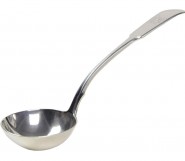Lot #28 - Long Jack Phillipus Tjakamarra
-
Auction House:Deutscher and Hackett
-
Sale Name:Aboriginal Art from the Luczo Family Collection, USA
-
Sale Date:19 Oct 2016 ~ 7pm
-
Lot #:28
-
Lot Description:Long Jack Phillipus Tjakamarra
(c.1938 – 1992)
Hunting, 1971
synthetic polymer powder paint on composition board
76.0 x 91.5 cm
bears inscription verso: 7003 -
Provenance:Painted at Papunya in 1971; Stuart Art Centre, Alice Springs (consignment 7, painting 3); Private collection, Northern Territory; Sotheby's, Melbourne, 24 July 2007, lot 43; The Luczo Family Collection, USA
-
Exhibited:Tjukurrtjanu: Origins of Western Desert Art, National Gallery of Victoria, Melbourne, 30 September 2011 – 12 February 2012; Musée du Quai Branly, Paris, 9 October 2012 – 20 January 2013 (label attached verso)
-
References:Related Work: Children’s Kadaitcha Dreaming, 1972, in Bardon, G., Papunya Tula, Art of the Western Desert, McPhee Gribble, Melbourne, 1991, p. 62 (illus.); Big Kangaroo Ceremonial Dreaming, 1971 in Bardon, G., and Bardon, J., Papunya, A Place Made After the Story: The Beginnings of the Western Desert Painting Movement, The Miegunyah Press, Melbourne, 2004, painting 129, p. 220 (illus.)
-
Notes:A resident of Papunya, Long Jack Phillipus Tjakamarra is one of the men credited with founding the Western Desert art movement. His oeuvre encompasses the evolution of desert painting from the initial representational depictions of ceremonial events on board to the creation of grand canvases that echo the scale of traditional ground mosaics. In the winter of 1971, Long Jack Phillipus was among those men who painted the Honey Ant Mural on the north-facing wall of the Papunya School. The convergence of Honey Ant ancestors from north, east, south and west at Papunya, was selected as the theme for the mural, for it showed that men from distinct language groups could work together on a common project and the education of their children.1 At the same time in August 1971, Kaapa Tjampitjinpa won the Caltex Art Award in Alice Springs. The prize money he received inspired other men, including Phillipus, to take up the brush—the award being a potent demonstration that knowledge of inherited culture could provide a platform for gaining financial independence. Kaapa was the leader of the painting movement at Papunya during its first fragile years and his early works, such as the prize-winning Men’s Ceremony for the Kangaroo, Gulgardi, 1971, in the collection of the Araluen Arts Centre, established conventions that other artists subsequently emulated. In a period of experimentation and great excitement, representational works such as Long Jack Phillipus Tjakamarra’s Hunting, 1971, comprise a rare subset within the now famous boards that were created during Geoffrey Bardon’s tenure as art teacher at Papunya. Historian Vivien Johnson has astutely characterised this subset as belonging to the ‘School of Kaapa’.2 Always controversial for the revelation of restricted aspects of men’s ceremonial life, these paintings provide a vivid snapshot of the ceremonies that informed subsequent, more encrypted paintings on canvas.3 The work on offer, Hunting, is a powerful example of the ‘School of Kaapa’. It shows two men kneeling and painting for ceremony. Objects that affirm their manhood surround the men: boomerangs, stone knives, spear throwers and spears. The inclusion of kutitji (softwood shields) could provide a clue to the precise ancestors that Phillipus envisioned, for ‘hunting’ is a generic title that does not capture the complexity of the scene portrayed. The presence of bullroarers suggests the gravity of the ceremony, while the large oval ceremonial objects, that appear to float above the hardened earth of the corroboree ground also emphasise the seriousness of the subject. Hunting is among the finest of the ‘School of Kaapa’ productions with its austere black background upon which each object is exquisitely detailed. Featuring a combination of perspectival and planar view, at a different scale of resolution, it is a beguiling, almost symmetrical representation, providing a rare window into the aesthetics of ceremonial practice. JOHN KEAN 1. Bardon, G. and Bardon, J., Papunya: A Place Made After the Story: The Beginnings of the Western Desert Painting Movement, TheMiegunyah Press, Melbourne, 2004, pp. 12–19; 2. Johnson, V., Once Upon a Time in Papunya, University of New South Wales Press, Sydney, 2010, pp.11–44; 3. ibid, pp. 100–138
-
Estimate:A$30,000 - 40,000
-
Realised Price:
-
Category:Art
This Sale has been held and this item is no longer available. Details are provided for information purposes only.










